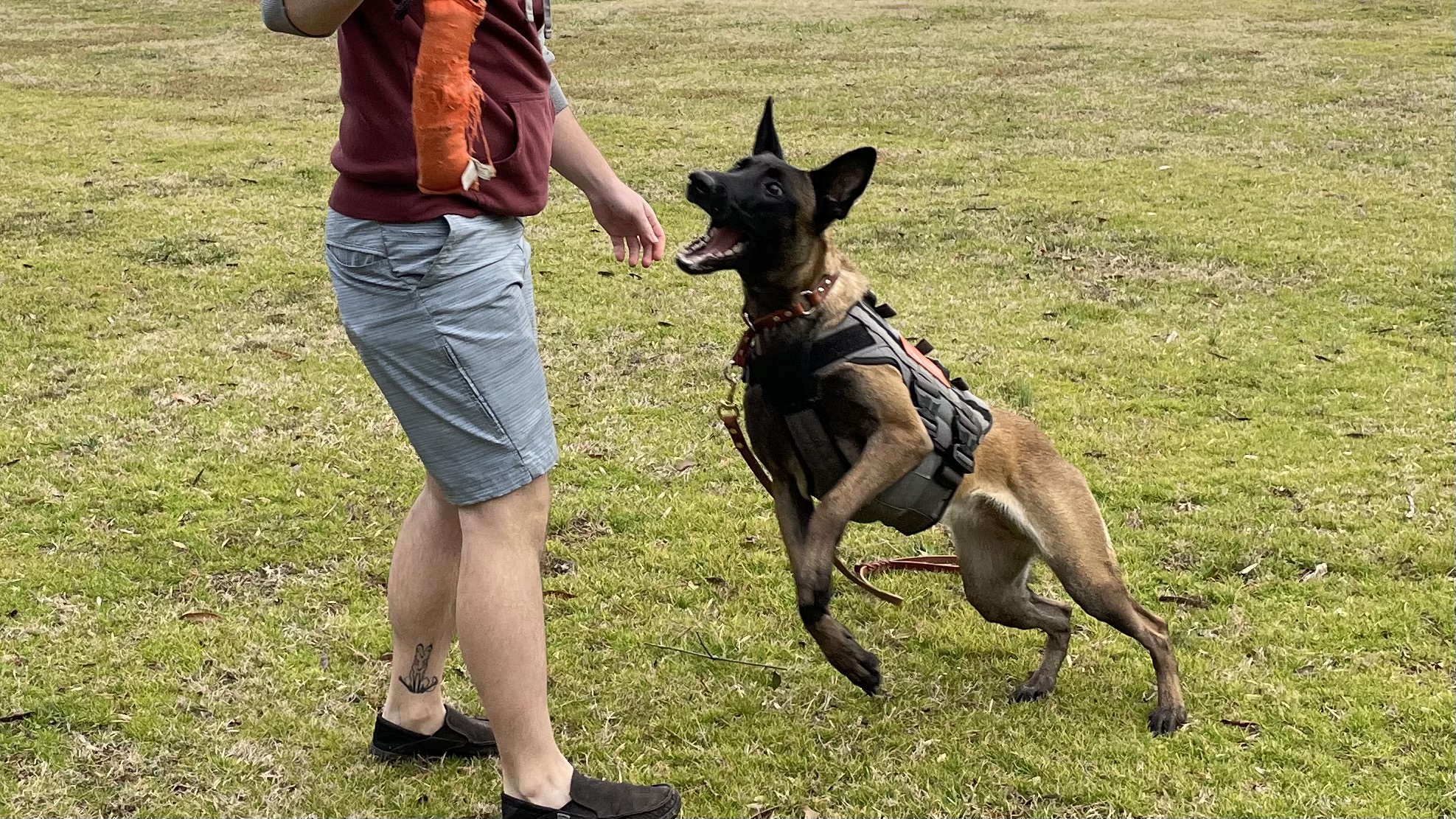Let’s talk about cheating, er…I mean management.
Management is a crutch used by people who hate training their dogs and want to take the lazy way out.
Or….is it?
What Is Management, Really?
Management is proactive training that focuses on setting up your dog’s environment and antecedents in a way that supports their success. The goal of good management is to prevent your dog from practicing the feelings and behaviors you want to see less of.
Think about it like this: Dogs practice behaviors. Management controls what gets practiced.
Management is:
- Walking your dog on leash instead of off leash
- Running them in fenced areas instead of loose or at large
- Choosing not to greet dogs on walks to avoid fights
- Using a crate to help potty train instead of just cleaning up every mess
Why Management Matters (More Than You Think)
- Practice makes permanent, and management controls practice. The less your dog rehearses a bad habit, the more space you have to reinforce better habits.
- Safety first. Dogs (and people) don’t always make safe decisions – that’s where management comes in.
- Stress reduction. Good management reduces frustration – for everyone.
- Sets the stage. Building good behavior is easier when you have some success to build on, rather than trying to patch things together after failure.
You don’t teach someone to drive by throwing them into traffic – you start in an empty parking lot. Management is your empty parking lot.
How to Choose the Right Management Strategy
There is no one-size-fits-all approach to a management plan — it’s as personal as your training plan. To choose the right strategy for your situation, consider how to use the following:
- Access control. Barriers, leashes, crates, pens.
- Environmental change. Rearranging rooms, pathways, and triggers.
- Human behavior change. Giving clear instructions and setting expectations for visitors, kids, housemates, etc.
Think ahead to how you plan on implementing your management strategy.
- What could go wrong?
- What’s the risk if this fails?
- Can you supervise reliably?
- What’s the easiest way to prevent mistakes before they happen?
Common Mistakes to Avoid
- Don’t rely too long on management without working on skill building. Management is a set of training wheels—at some point, they will come off (whether you want them to or not!)
- Don’t assume your dog “knows better” once management stops. If you haven’t spent enough time building appropriate skills for your dog while your management plan has been in place, how are they supposed to “know better” when they haven’t been taught?
- Preventing practice of unwanted habits is only half the battle – you also have to make sure they practice good habits!
- Sloppy management setups are ineffective (and potentially dangerous). If your dog can hop the baby gate in a heartbeat, how confident are you that it’s going to control his access? Make sure your barriers are sturdy and size-appropriate, or use multiple levels of management (like a leash AND a gate, or a gate AND a muzzle).
- Don’t ignore the emotional needs behind behaviors. Remember, the goal is to prevent practice of unwanted feelings or behaviors. If one dog is mean-mugging the other from across the room, they’re not practicing warm and fuzzy feelings—even if they’re “not fighting.”
Management Isn’t Forever (Most of the Time)
In the early stages of training, it may seem like all we do is management—for good reason! Most often our number one goal is to break up the habit-forming cycle and avoid strengthening any bad habits. Management gives us the ability and room to build new, better habits.
As we work on skill building, we gradually reduce management at a rate that keeps you and your dog successful. We build on that success until we find ourselves at a sustainable, easy to maintain place.
Throughout your training plan, management is likely to evolve with your dog’s learning.
What to Do When Management Fails (Because Sometimes It Will)
Management always fails — it’s just a matter of when. Someone leaves a gate open, a leash clip breaks, or food falls at the wrong moment. These things happen, which is why layered management matters — and why failures aren’t the end of the world. They’re opportunities to adapt and improve.
When your management plan fails, it’s a learning opportunity. Now you know where the challenge points are, now you know to plan for them.
Make sure that your management plan accounts for failure—and includes a game-plan for what to do when that failure occurs. It happens to the best of us!
Management is Training
Management isn’t weak. It isn’t lazy. It’s certainly not “cheating.”
Management is a sign of smart, proactive dog ownership.
When you manage wisely, you’re setting your dog — and yourself — up for real success.


